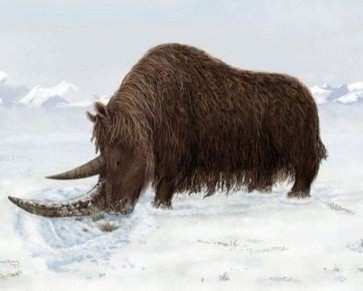Tibet Cradled Oldest Woolly Rhino, Fossil Shows It's 3.7 Million Years Old

A 3.7 million-year-old fossil of a species of woolly rhinoceros -a complete 3-foot-long skull and lower jaw, along with a neck vertibra - was uncovered in Tibet's Zanda Basin, in the southwest.
The woolly rhino fossil was found on the Tibetan Plateau in 2007 by paleontologists from the Natural History Museum of Los Angeles County and the Chinese Academy of Science.
The findings were released on Friday in the journal Science.
The fossil is believed to be the oldest sample of its kind ever discovered. They say that about a million years before the Ice Age - when the known woolly rhinos roamed - the newly discovered rhino walked the Himalayas with its large, long-haired body and snow-sweeping structures that made them perfectly adapt to the environment they lived in.
Researchers also believe that some mega-herbivores first evolved in the Tibetan foothills of the Himalayas before migrating to other regions.
Dubbed as Coelodonta thibetan, the rhino also had teeth with high crowns that could have made it easy for it to handle tough and high-altitude vegetation.
The cold winters in high Tibet served as a habituation ground for the mega-herbivores, which became pre-adapted for the Ice Age, successfully expanding to the Eurasian mammoth steppe, researchers said.
The new fossil shows that the old rhino was equipped with a flat shovel-like horn, which it would have used to sweep away snow and find vegetation.
Researchers estimate that the rhino was roughly the size of today's Indian and black rhinos, but since the fossils did not include hair, paleontologists can only guess how woolly it might have been.
The fossil is quite well preserved - just a little crushed, so not quite in the original shape; but the complete skull and lower jaw are preserved, said Xiaoming Wang from the Natural History Museum of Los Angeles County in an interview with the BBC News.
Scientists have long thought that some mammals adapted to the global cooling well before it happened.
Wang and his colleagues were able to now provide proof with their finding from the Zanda Basin, which sits 3,700 to 4,500 meters above sea level and is surrounded by higher peaks.
It just happens to have the right environment to basically let animals acclimate themselves and be ready for the Ice Age cold, Wang said.
The extinction of Ice Age giants such as woolly mammoths and rhinos, giant sloths, and saber-tooth cats has been widely studied, but much less is known about where these giants came from, the researchers said in a statement. The Tibetan Plateau may have been another cradle of the Ice Age giants.
© Copyright IBTimes 2024. All rights reserved.






















